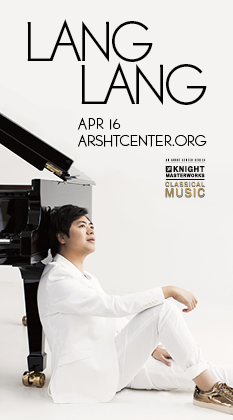Frost Symphony rises to the challenge with a stirring Mahler Fifth

Despite the massive orchestral forces and fortissimo climaxes, Mahler’s Symphony No. 5 abounds with intimate, exposed passages performed by just a few instruments. It offers every section of the orchestra the opportunity to show what it can or can’t do, and it is a challenging work for a non-professional ensemble. But the University of Miami’s Frost Symphony Orchestra provided a highly creditable, exciting performance Saturday night at Gusman Concert Hall.
 Conductor Thomas Sleeper pushed the well-rehearsed orchestra hard, shaping every phrase in the surging first movement and calibrating the climaxes so the ensemble always had reserves of power from which to draw. The first-movement marches can come off as plodding, but his performance was driving and edgy, with a forward motion that carried through to the end. He took the famous Adagietto at an unusually brisk clip, one that sacrificed some tension but that also sacrificed some of the sentimentality that marks many performances.
Conductor Thomas Sleeper pushed the well-rehearsed orchestra hard, shaping every phrase in the surging first movement and calibrating the climaxes so the ensemble always had reserves of power from which to draw. The first-movement marches can come off as plodding, but his performance was driving and edgy, with a forward motion that carried through to the end. He took the famous Adagietto at an unusually brisk clip, one that sacrificed some tension but that also sacrificed some of the sentimentality that marks many performances.
The orchestra, part of the university’s Frost School of Music, includes a number of highly talented musicians among its members. First-class solos came from the trumpet, horn and woodwinds, and, in the outer movements, the violins ripped through the difficult passagework. There were some rough patches, especially in the second movement. And the wistful nostalgia of some of the melodies was lost, possibly in the effort to get all the notes in. But it was a stirring performance that brought out much of the eloquence of one of Mahler’s best-known symphonies.
The concert opened with the world premier of Midday by the American composer Paul Phillips. An energetic, contrapuntal work, Midday presents rapid repeated figures in the strings over ominous drumbeats, and great crescendos in dissonant harmonies in the brass. A middle section was calmer, although the drumbeats continued softly, anticipating the return to the energetic tones of the first section.
Frost adjunct faculty member Gary Keller stepped onto the stage with a tiny soprano saxophone to perform Villa-Lobos’ rarely heard Fantasia for Saxophone, Three Horns and Strings, a three-movement mini-concerto. According to the program, this performance may be the first to offer the work as written, using a manuscript from the Villa-Lobos Museum in Rio de Janeiro to restore the work to its original key and eliminate several prominent wrong notes that appear in the printed version.
As you’d expect from Villa-Lobos, the work is lyrical, atmospheric and marked by strong, unusual rhythms. Keller played with an easy virtuosity, bringing out the melancholy aspects of the work without any apparent struggles with the rapid cascades of notes.
Posted in Performances
One Response to “Frost Symphony rises to the challenge with a stirring Mahler Fifth”
Leave a Comment
Sun Apr 19, 2009
at 12:59 pm
1 Comment






Posted Apr 20, 2009 at 8:56 am by Geri Lisanti-Levy
Your descriptive review made me feel like I was at the concert. I appreciated your support of these fine young musicians and was disappointed that the concert was not web streamed. Thank you for giving the University of Miami Orchestra the recognition they deserve.